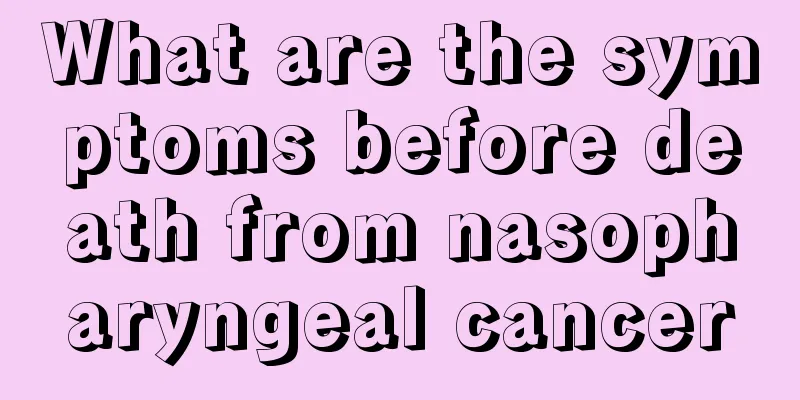Introduction to Radical Thyroid Cancer Surgery

|
What should you do once thyroid cancer is diagnosed? The issue that patients and their family members and friends are most concerned about is whether thyroid cancer can be cured and what methods can be used to cure it? Surgery is the best way to cure thyroid cancer. Now I will take you to learn about radical thyroid cancer surgery. Radical thyroidectomy is a wide-ranging resection of the affected thyroid gland (including the isthmus of the thyroid gland and most of the contralateral thyroid gland) and regional lymph nodes in the neck for patients with thyroid malignant tumors. In addition to the treatment of the thyroid gland itself, the scope of surgery also includes the removal of lymph nodes around the thyroid gland (anterior laryngeal, tracheal, paratracheal and recurrent laryngeal nerve group lymph nodes), the removal of the sternocleidomastoid muscle, the internal jugular vein and the upper, middle and lower groups of lymph nodes of the internal jugular vein, and the removal of lymph nodes in the posterior cervical triangle (many authors routinely remove the accessory nerve) and the submandibular triangle and submental triangle. If necessary, anterior superior mediastinal clearance should also be performed. Even worse, only a very thin skin flap is retained in the front of the neck, and the subcutaneous tissue and platysma muscle are removed. In recent years, many authors have adopted a modified radical neck surgery and achieved gratifying results, and the functional and aesthetic effects are more satisfactory. The modified radical neck surgery is introduced as follows: [Indications] 1. Invasive papillary adenocarcinoma. 2. Invasive follicular head adenocarcinoma. 3. Medullary carcinoma. [Contraindications] 1. Those who are in extremely poor general condition or suffer from serious diseases of other important systems or organs and are unable to withstand major surgery. 2. Patients with distant metastasis. 3. Undifferentiated carcinoma. [anaesthetization] Endotracheal intubation under general anesthesia. [Surgical steps] 1. Position the head to the opposite side to fully expose the lateral and posterolateral sides of the neck. 2. Based on the collar incision on the neck, the incision goes upward through the inner edge of the sternocleidomastoid muscle on the affected side to the lower edge of the mastoid, forming a ⊥-shaped incision. 3. Expose and incise the skin, subcutaneous tissue and platysma muscle. If there is no tumor infiltration in the platysma muscle, it should be retained. Separate the skin flap from the deep surface of the platysma muscle. The inner side can exceed the midline of the trachea, the outer side can reach the front edge of the trapezius muscle, the lower side can reach the clavicle, and the upper side can pass the lower edge of the mandible by about 2 cm. Flip the skin flap upward, downward, front and back, and suture it to the skin at the corresponding part. 4. Separate the sternocleidomastoid muscle and enter along the inner edge of the sternocleidomastoid muscle, pulling it outward. If the exposure is not satisfactory, cut it 2 cm above the lower attachment point of the sternocleidomastoid muscle, turn it up, and suture it again after the operation. The fascia wrapping the muscle should also be removed. 5. Resection of the infrahyoid muscles: After separating the infrahyoid muscles on both sides from the white neck line, cut the infrahyoid muscles along the attachment edge of the clavicle and turn them upwards for later removal. 6. Resection of the affected thyroid gland The affected thyroid gland is removed (including the isthmus and the adjacent thyroid gland on the opposite side), and a portion of the thyroid gland on the outside and back of the healthy side is retained to maintain physiological function. The thyroid gland can be processed starting from the lower pole and turned upward. At this time, care should be taken not to damage the recurrent laryngeal nerve. The isthmus can be penetrated in front of the trachea with a hemostatic forceps and then removed on both sides. The healthy thyroid gland can be processed by partial or major resection. 7. Treatment of the internal jugular vein Whether the internal jugular vein should be preserved or not can be determined according to the specific case. If there is extensive metastasis to the cervical lymph nodes, it is advisable to remove the internal jugular vein at the same time to ensure a radical cure. If the metastasis is not serious, or the contralateral internal jugular vein has been removed in the previous operation, the surgical internal jugular vein should be preserved. If the internal jugular vein needs to be removed, the carotid sheath should be opened and the internal jugular vein should be carefully separated to prevent rupture and bleeding or air embolism. Ligate and cut the internal jugular vein near the upper edge of the clavicle, and suture the proximal end. Then lift the neck The distal end of the internal jugular vein is separated upwards. There are three groups of lymph nodes, upper, middle and lower, along the course of the internal jugular vein, which should be removed together. The internal jugular vein is separated to the submandibular triangle, ligated and cut at the lower edge of the submandibular gland, and attention is paid to preventing damage to the vagus nerve and carotid artery. 8. Treatment of the submandibular triangle The submandibular triangle is generally not cleared unless the upper pole lesions have been widely metastatic. Cut the subhyoid muscles at the lower edge of the mandible, and remove the subhyoid muscles, internal jugular vein, and thyroid tissue together. 9. Clear the supraclavicular lymph nodes. Clear the supraclavicular lymph nodes and adipose tissue that have metastasized, taking care not to damage the brachial plexus. 10. After the suture has completely stopped the bleeding, place a soft rubber tube for drainage, suture layer by layer, and bandage the wound. [Precautions during surgery] 1. All the anterior cervical muscles and sternocleidomastoid muscle that are invaded by the tumor should be removed, but the sternocleidomastoid muscle that is not invaded by the tumor should be retained as much as possible. 2. When removing the thyroid gland, be careful not to damage the recurrent laryngeal nerve. 3. Lymph nodes where cancer has metastasized, such as those near the trachea, internal jugular vein, submandibular and supraclavicular fossa, should be completely removed. 4. If the internal jugular vein needs to be removed, be careful when separating it to prevent it from breaking and causing bleeding or air embolism. At the same time, be careful to prevent damage to the vagus nerve and phrenic nerve. 5. When separating supraclavicular lymph nodes, be careful not to damage the brachial plexus. 6. Stop bleeding carefully, and perform routine ligation and suture for larger blood vessels. [Postoperative treatment] 1. General postoperative treatment is the same as that of subtotal thyroidectomy, except that iodine is not required. 2. The treatment of postoperative complications is basically the same as that of subtotal thyroidectomy. 3. Thyroxine tablets should be taken for a long time after surgery, and follow-up should be conducted 3 months, 6 months, and 1 year after surgery, and then once a year thereafter for a total of 5 years; thereafter, follow-up can be conducted every 2 to 3 years. |
<<: Is glioma harmful to the human body?
>>: How harmful is glioma to humans?
Recommend
The little bumps on the face
Young people take the quality of their skin very ...
Rectal cancer patients must learn to self-diagnose in order to receive timely treatment
There are many patients with rectal cancer in tod...
Side effects of acupuncture, precautions to keep in mind
The technology of acupuncture has a history of ma...
Why are blisters itching between toes?
Blisters grow between the toes and are itchy. Gen...
Upper limb muscle weakness
The continuous occurrence of upper limb muscle we...
How to treat gray hair
Many young people who pursue fashion will dye the...
Symptoms of deep vein thrombosis
Venous thrombosis is actually a more serious dise...
What are the causes of lung cancer? Pay attention to these five aspects
Lung cancer is a terrible disease that is caused ...
Is sweating a detoxification method?
Sweating is a very common phenomenon. Everyone ha...
Symptoms of lung cancer in the late stage include edema of the face and neck
In general, there are many symptoms of lung cance...
How to reduce swelling and relieve pain after a bee sting
Many people will encounter some unexpected events...
What are the hazards of oxygen to the human body
We know that in our daily lives we cannot live wi...
Diet and daily life of patients with gallbladder cancer
In the past, gallbladder cancer was rare, but now...
How long can you live after surgery for advanced gastric cancer
How long can you live after surgery for advanced ...
Acne on the back in summer
When the weather is hot in the summer, you should...









